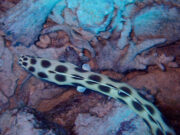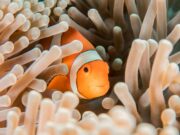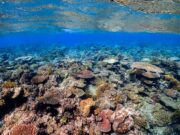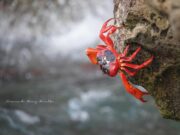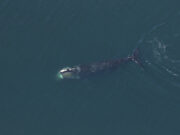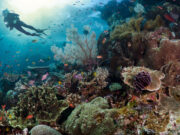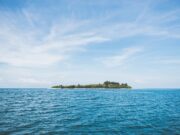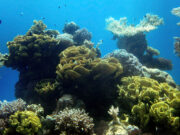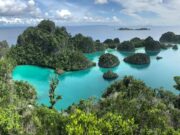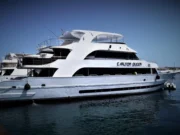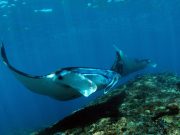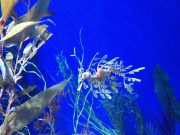Turkey, with its rich history, diverse culture, and stunning landscapes, has long been a sought-after destination for travellers. However, beyond its ancient ruins and bustling bazaars lies an underwater paradise waiting to be explored. The idyllic waters of Turkey offer scuba divers a unique opportunity to immerse themselves in a world of vibrant marine life, historic wrecks, and crystal-clear seas. In this article, we’ll provide an in-depth overview of the best scuba diving in Turkey, from its remarkable dive sites to the rich marine biodiversity that awaits beneath the surface.
Top dive spots in Turkey
Turkey’s extensive coastline along the Mediterranean and Aegean Seas is dotted with exceptional dive sites that cater to divers of all skill levels. Here are some of the most notable destinations for scuba diving in Turkey:
Kas
Nestled along the Turkish Riviera, Kas is undeniably one of the top places for diving in Turkey and the whole of the Mediterranean. With over 25 dive sites catering to divers of all levels, it offers a diverse range of underwater experiences – with many dives just a short boat ride from shore. From exploring underwater caves and vibrant reefs to diving alongside intriguing shipwrecks from World War II times, Kas has something for everyone.
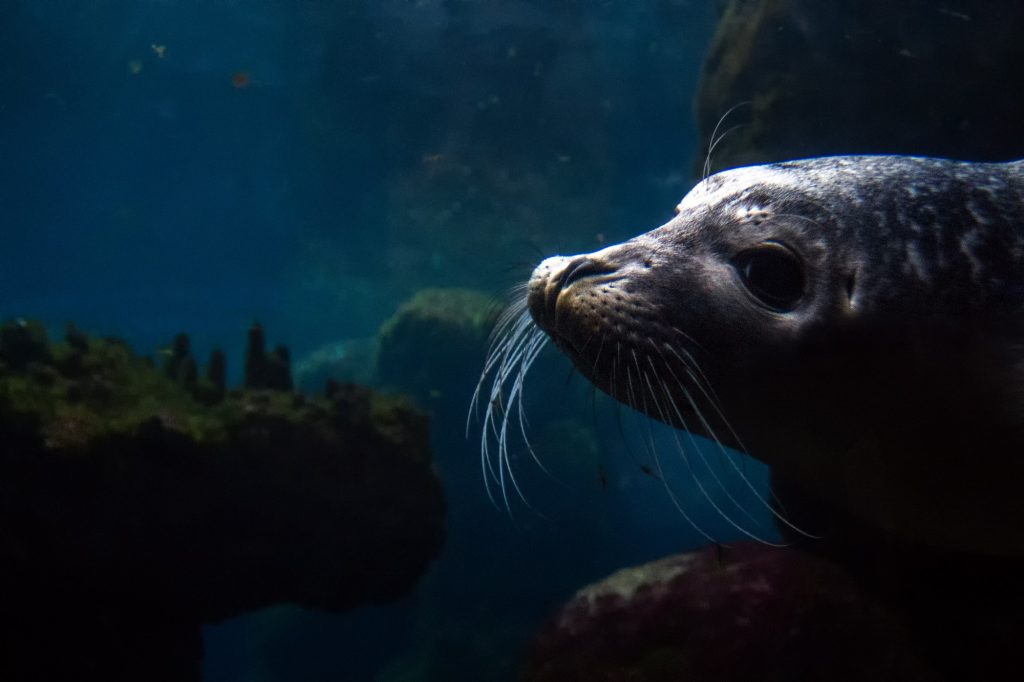 Image: DepositPhotos
Image: DepositPhotosThe calm, clear waters and abundant marine life at Kas make it an ideal location for both beginners and experienced divers. Notable sites include the mesmerizing Canyon dive site, where you might spot a Mediterranean monk seal, and the Dimitri wreck, which rests at a depth of 30 – 40 meters. This wreck ran aground in 1968, carrying a cargo of cotton from Turkey to Greece.
Fethiye
The Fethiye region boasts numerous dive sites, but perhaps the most famous is the Blue Cave, a spectacular underwater cavern with mesmerizing blue hues. Divers can explore its otherworldly beauty and discover unique rock formations that are perfect for photography fans. As well as the Blue Cave, Fethiye offers opportunities for diving among ancient amphorae, rocky reefs, and a variety of other captivating cavern dives. Fethiye is also a haven for loggerhead sea turtles.
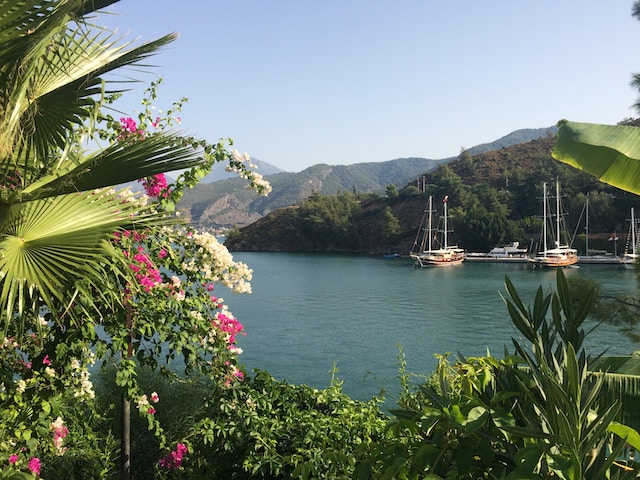
Gallipoli
The Gallipoli Historical Underwater Park features a collection of sunken ships from the Gallipoli campaign of World War I. This campaign saw the sinking of numerous ships, making this a historically significant and intriguing diving destination. Visitors can dive the wrecks of 14 warships, including the HMS Majestic and HMS Triumph, each with their own stories to tell.
Some of the wrecks are in shallow waters, around 7 meters deep, with others at 18 to 30 meters. The HMS Triumph rests much deeper, at 56 – 72 meters, and provides an intriguing wreck for tec divers. To make the most of this unique dive destination, it’s a good idea to get certified as a wreck diver before you visit.
Bodrum
Known for its historical significance and vibrant nightlife, Bodrum also offers exceptional diving opportunities. Dive into the waters surrounding Bodrum to uncover ancient shipwrecks, vibrant coral gardens, and a wide range of marine species. Bodrum is considered one of Turkey’s best diving destinations, with over 20 dive sites that include walls, reefs, drop-offs, a cave, pinnacles, shipwrecks, and even a sunken plane.
Kemer
Nestled along the Turkish Riviera, Kemer is another great spot for scuba diving. The Phaselis Bay, in particular, is renowned for its crystal-clear waters and underwater archaeological sites, where you can explore ancient ruins submerged by time.
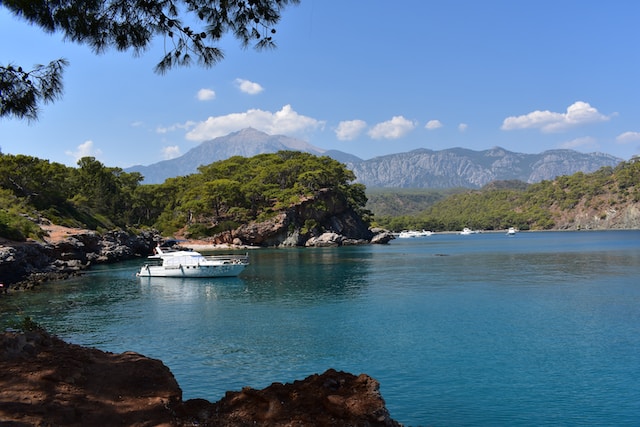
Göcek
Located in the heart of the Turkish Turquoise Coast, Göcek boasts spectacular scenery and vivid blue waters that make it ideal for both snorkelling and diving. It is a haven for those seeking tranquillity and has quiet bays with calm waters and crowd-free scuba diving.
Turkey’s marine biodiversity
Turkey’s coastal waters are home to a remarkable diversity of marine life. Divers can expect to encounter a wide range of species, from small, colourful nudibranchs to larger, charismatic creatures like sea turtles and rays. Here are some of the marine species you may encounter:
Sea turtles
The warm Mediterranean waters surrounding Turkey provide a habitat for loggerhead and green sea turtles. Divers have the privilege of witnessing these gentle giants at Turkey’s dive sites and they are also seen just off the beaches. Sea turtle nesting season is from May to October.
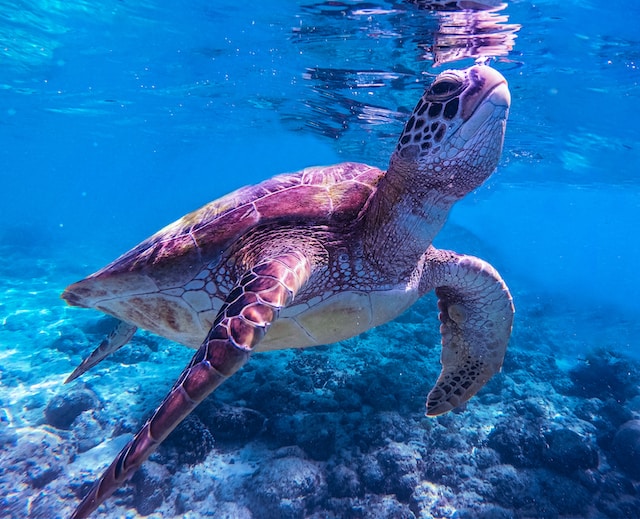
Fish
The underwater world of Turkey is teeming with fish species large and small, including plenty of reef fish, groupers, barracudas, moray eels, scorpion fish, tuna, and parrotfish.
Nudibranchs
For macro photography enthusiasts, Turkey offers an array of nudibranch species. These small, stunningly coloured sea slugs can be found crawling among the reefs and seabed, adding an extra dimension of colour to your underwater photography.

Coral reefs
Turkey’s underwater ecosystems include both coral reefs and rocky reefs, each providing a unique habitat for marine species. While not as extensive as some tropical destinations, Turkey’s reefs are still a sight to behold. These ecosystems provide shelter to a variety of marine species and offer captivating underwater landscapes.
When to go diving in Turkey
The scuba diving season in Turkey typically runs from April to November, with the best visibility in the summer months.
Diving in Turkey is a captivating experience that combines beautiful landscapes, historical riches, and diverse underwater adventure. Whether you’re a novice diver or a seasoned adventurer who loves reefs, walls, or wrecks, Turkey has something for you. So, pack your diving gear and explore this underwater paradise, one dive at a time.
Kathryn Curzon, a shark conservationist and dive travel writer for SSI (Scuba Schools International), wrote this article.
Image credits:
- Mediterranean monk seal: DepositPhotos

